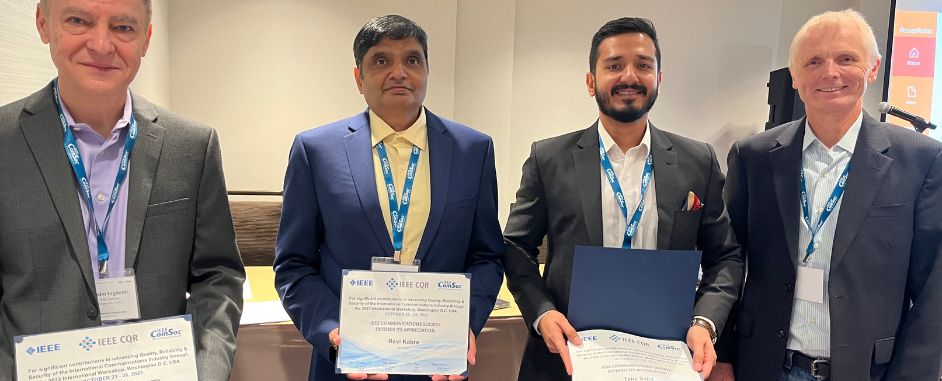Cloud readiness for critical infrastructure: Insights from the IEEE International Workshop CQR

The 38th IEEE International Workshop on Communications Quality and Reliability (CQR) held in Washington, DC, served as a beacon of insight for industry professionals. This three-day workshop, filled with technical sessions, paper presentations, and keynote panels, fostered a rich exchange of knowledge, centering on the pivotal themes of network quality, security, and reliability.
A convergence of minds and innovation
I was honored to preside over the session addressing Cloud Readiness in Critical Infrastructure where the workshop commenced with a keynote address by Kathryn Condello, Sr. Director of National Security & Emergency Preparedness at Lumen. This set the stage for a series of discourses that would bring together the rigorous demands of critical infrastructure with the dynamic potential of cloud technologies.
A march towards resiliency
The attendees were navigated through the intricate architecture choices that delineate IT from OT, with a unanimous recognition of cloud-based software architectures' complexity. Cloud technology offers flexibility and innovation but must align with the predictability and resilience of critical infrastructure, which is governed by strict regulations.
Three key areas for integrating cloud into critical infrastructure:
-
Evaluating architecture choices for IT and OT with a focus on security; acknowledging that while cloud-based architectures offer more flexibility, they also add complexity and we're not yet ready for the most advanced use cases.
-
Examining the security design for Endpoint Detection and Response (EDR) within 5G networks. There are various factors to consider during the deployment and testing stages and a strong focus on setting baseline performance indicators and establishing robust failover procedures.
-
Focusing on the concept of "shared" security responsibilities between the Cloud-Native Functions (CNF) and the infrastructure layers. Cloud-native environments are more vulnerable to attacks because, unlike virtual machines (VMs), containers do not operate in isolated environments. Therefore, implementing real-time detection of activities in cloud-native applications and continuous monitoring is essential for maintaining the security of 5G network deployments.
The convergence of cloud technology and critical infrastructure is not merely a discussion of compatibility; it is a forward march toward a future where resilience, agility, and security become the cornerstones of our digital infrastructure.
While the journey is complex and challenging, with the collective wisdom and foresight of industry leaders, the path is being charged with precision and care.
For professionals keen to dive deeper into the discussions and breakthroughs of the 38th IEEE International Workshop on CQR, additional details and resources can be found on the official website.
Learn more about Nokia Advanced Consulting Services.


